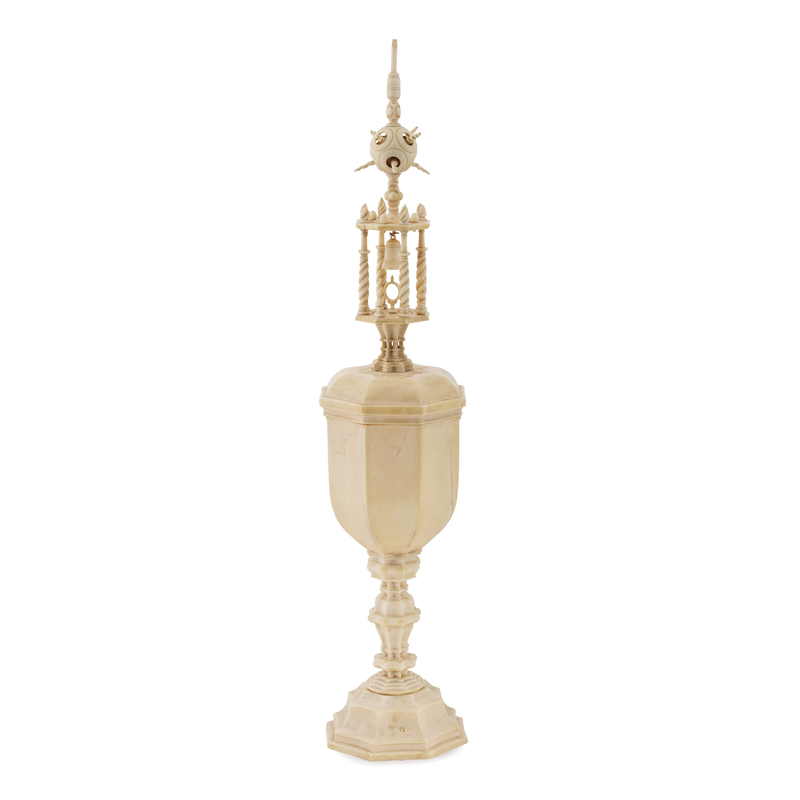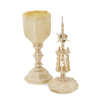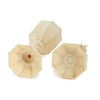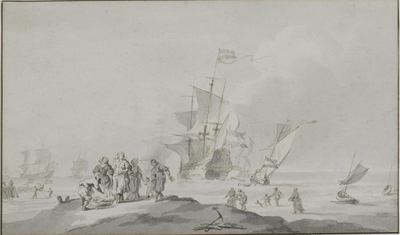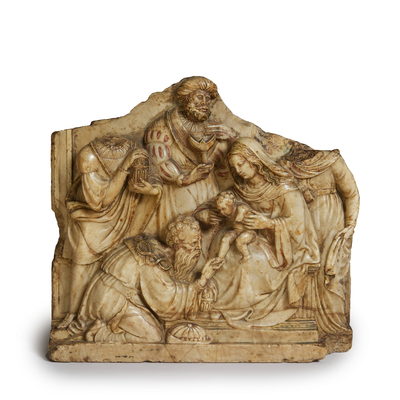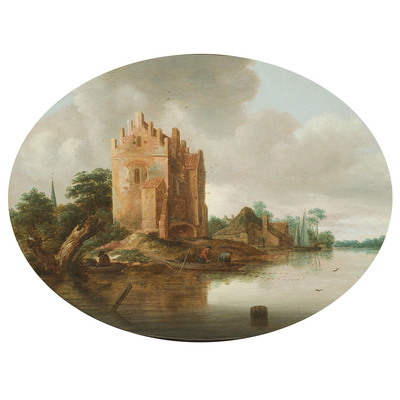Turned ivory goblet with a bell
Global shipping available
- Origin
- Southern Germany
- Period
- 17th century
- Material
- Ivory
- Height
- 48 cm
- Diameter
- 9.5 cm
- Provenance
Axel Vervoordt, Antwerp
Collection Lily & Edmond J. Safra
Questions about this object?
Please use one of the contact options below:
Description
This exceptional turned ivory goblet has an octagonal cup with a particularly richly worked lid. The smooth cup stands on a conical, hexagonal base with a baluster-shaped stem. On top of the octagonal lid is an octagonal structure, with four spiral columns, in which a small ivory bell hangs above a ring. Above on the octagonal platform is an openwork sphere, containing an internal polished sphere. These decorative spheres were among the most difficult to master turned forms; through a small opening, the thin ivory was cut and turned from within, a delicate and complex process. The foot of the cup reads in ink: B /n°11. A similar cup in the Danish Royal Chamber of Art at Rosenborg Castle in Copenhagen, attributed to Zick's workshop, has a similar 'bell tower' shape, consisting of two platforms supported by spiral columns.
In the sixteenth and seventeenth centuries, turning was a distinguished hobby, practised by European nobility, princes, and kings. The turning of ivory, using a mechanically powered lathe, was seen as an appropriate and virtuous pastime, in which the practitioner was trained in precision and concentration, and at the same time created fascinating objects which often served as (diplomatic) gifts or were part of a cabinet of curiosities. These objects fitted perfectly in the cabinets of curiosities; they combined craftsmanship and natural material with the growing knowledge of geometry. Craftsmen specializing in turning acted as teachers for the nobility, often staying at court.
The turning was done mechanically with a lathe: a piece of ivory was fixed in the lathe, which could make the object move in two or three directions at the same time. The maker took a sharp object and held it to the rotating ivory. The different movements and directions of the mechanism allowed the maker to shape the object as desired. The craftsmanship of the maker, and in particular his or her geometrical and spatial insight, steady hand and precision, determined the complexity and sophistication of the final object. The mechanism of the lathe, which can be adjusted, makes these exceptional turned objects the first examples of ‘machine-generated art’.
